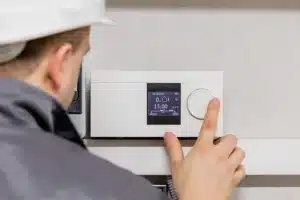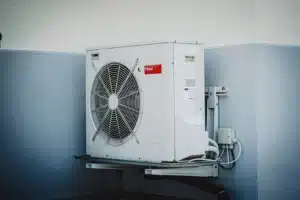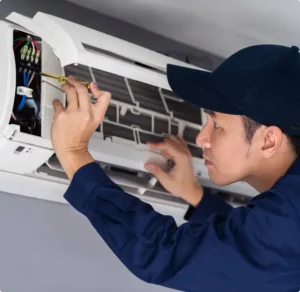Kyzar Celebrates National HVAC Tech Day with Over $5,000 in Cash and Prizes
At Kyzar Air Conditioning, we believe in recognizing the hardworking...
When it comes to cooling your space, having a basic understanding of the different types of air conditioning systems is crucial. In this blog post, we’ll provide a no-nonsense breakdown of the various air conditioning options available, helping you make informed decisions based on your specific needs.
The most common type of residential cooling system is the split system air conditioner. This system comprises two main components: an indoor unit that contains the evaporator coil and an outdoor unit containing the compressor and condenser coil. These systems are efficient, relatively easy to install, and can be used to cool individual rooms or entire homes.
Window air conditioners are a cost-effective and space-efficient cooling solution for smaller spaces. These units are installed directly in a window or a hole in a wall, with the evaporator coil facing indoors and the condenser coil facing outside. While suitable for cooling single rooms, they may not be the most energy-efficient option for larger areas.
Ductless mini-split systems offer a flexible cooling solution without the need for ductwork. Similar to split systems, they consist of an indoor unit and an outdoor condenser. However, multiple indoor units can be connected to a single outdoor unit, allowing for individualized climate control in different rooms or zones. These systems are ideal for homes without ductwork or for room additions.
Central air conditioning systems are designed to cool entire homes or commercial spaces. They use a network of ducts to distribute conditioned air throughout the building. The central unit, typically located outside, contains the compressor and condenser, while the indoor unit houses the evaporator coil. These systems provide consistent temperature control but require professional installation and maintenance.
Portable air conditioners offer a temporary cooling solution that can be moved from room to room. These units typically include an exhaust hose that vents hot air outside through a window. While convenient for spot cooling, portable air conditioners may not be as efficient as other types and are better suited for smaller spaces.
For those looking for an eco-friendly option, geothermal heat pumps are worth considering. These systems use the stable temperature of the ground to exchange heat, providing both heating and cooling. While the upfront costs can be higher, geothermal systems are energy-efficient and environmentally friendly in the long run.
Understanding the different types of air conditioning systems allows you to choose the most suitable option for your specific requirements. Whether you’re looking for a cost-effective solution for a single room or a comprehensive cooling system for your entire home, there’s a type of air conditioner that fits the bill.

At Kyzar Air Conditioning, we believe in recognizing the hardworking...

When it comes to maintaining comfort and managing energy costs...

In Florida, where air conditioning is essential for comfort year-round,...

In Florida’s sweltering heat, a reliable air conditioning system is...

In Florida’s hot and humid climate, HVAC systems are essential...

Florida’s warm climate brings many advantages, but it also means...